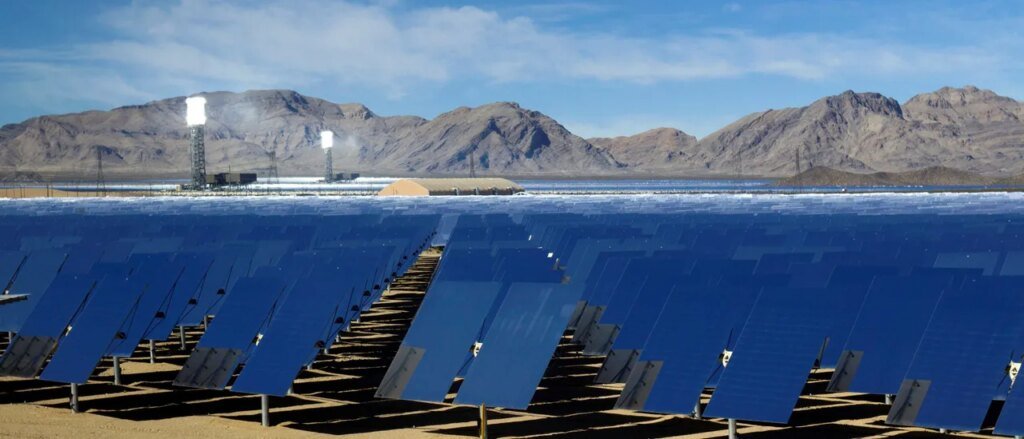Ivanpah Solar Farm’s Struggles
The sun is setting over the Ivanpah solar farm located in California’s Mojave Desert. This ambitious project was supported by a $1.6 billion taxpayer-funded loan back in 2011. Ernest Moniz, who served as President Obama’s first Secretary of Energy, once hailed it as a sign of America’s leadership in solar energy.
However, it seems to be turning into yet another tale of mismanaged public funds flowing to questionable green energy ventures. Spanning five square miles, and situated about 105 miles from Las Vegas, Ivanpah features three towering structures and 173,500 heliostats—mirrors designed to focus sunlight. As energy consultant Edward Smeroff put it, “The mirrors reflect the heat from the sun and send it to a receiver at the top of the tower,” generating steam to power a traditional steam turbine. It’s quite the intricate setup.
Unfortunately, that complexity has led to inefficiency. Launched in 2014 at a staggering cost of $2.2 billion, Ivanpah hasn’t delivered the results its proponents expected. In today’s solar landscape, it struggles to keep pace with conventional solar setups, especially since they can’t keep up with soaring demands from sectors like AI.
Yet, while it may be lacking in energy output, Ivanpah excels at an unexpected, grim task: bird fatalities. The intense heat generated by the mirrors can reach 1,000 degrees, making it hazardous for any birds that happen to fly overhead. Reports suggest that this “clean energy” facility may be responsible for the deaths of at least 6,000 birds annually.
The report of Ivanpah’s imminent closure aligns with recent comments from President Trump during his address to the United Nations in New York, where he criticized green energy initiatives. “We are eliminating renewable energy under false pretenses,” he stated, explaining how such policies seem to benefit profit-driven nations while harming established economies.
He emphasized the need to dismiss globalism, which he believes forces successful countries to make sacrifices that could harm entire societies.
Concerns About Global Leadership
The Trump administration’s stance against wind and solar energy has raised alarms within the investment community, suggesting that the U.S. might be ceding its position in green energy to China. Reports indicate that the U.S. is backing away from competing in the renewable energy sector, which plays an increasingly crucial role in the global economy.
According to recent research, more green manufacturing projects were canceled than initiated in the second quarter, marking a first in records from MIT and the Rhodium Group. There was a significant dip in clean energy investments, dropping by 51% compared to the previous quarter.
Many believe that wind, solar, storage, and electric vehicles will shape the energy landscape for years. If that’s true, China would easily maintain its top position in energy production and infrastructure, especially given its control over global supply chains for these technologies. But what if green energy has already peaked?
That’s the essence of Trump’s message at the UN. His administration advocates for leveraging America’s strengths—fossil fuels, nuclear, and even geothermal energy—while underscoring China’s vulnerabilities. With limited access to domestic oil and gas, China has turned to supplying raw materials essential for green technologies, not out of choice but necessity, following decisions made by various governments in the West.
This is a game the Trump administration chooses not to play. The aging power grid in the U.S. needs reliable energy sources for homes and businesses, while data centers demanding constant power are best served by small modular nuclear reactors (SMRs). Additionally, the U.S. can strengthen its position by exporting its oil, LNG, and even coal to eager markets worldwide. In this evolving context, there’s little need for subsidized, unpredictable solar or wind energy, especially with the looming closure of the massive Ivanpah facility.
If Beijing aims to lead in green energy, so be it.







